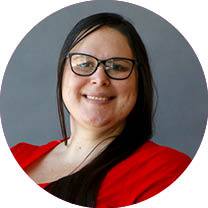The property, Bull Creek District, is located at the Lake Austin and Bull Creek Water supply Suburban Watershed district.
Planned unit development is a regulatory mechanism that allows for projects that are superior to be approved, said Environmental Program Coordinator Leslie Lilly. Otherwise, these projects would not be allowed under the current review process and under current code and criteria, she said.
The amended PUD allows the zoning district to be revised from a single residential property to one for civic or cultural use. In this case, the cultural use will be an art museum to memorialize the legacy of the current property owner, Mr.Booth, Lilly said.
The six conditions required by the commission include addressing the critical environmental feature, or CEF, buffer agreed upon by staff, neighborhood groups and the applicant; engaging geotechnical and structural experts to design the proposed building to the highest standard of care for the preservation and protection of the CEF; meet with the Texas Department of Transportation to finalize concerns regarding the entrance and exit to the property; and include language that was agreed upon by all parties regarding sound.
The developers must also figure out how to keep the shoreline clean of trash and provide recycling options throughout the property. Additionally, the project managers must meet with the Austin Police Department to establish a no-wake zone.
According to the project’s landscape architect, Daniel Woodroffe, for the past few years they have already been doing extensive native habitat restoration in terms of adding native plants and converting lawn areas into native plantings. This will not only curate rooms for the ongoing art collection, but also for the ecological performance and landscape superiority, he said.
"Simply put, the result is a more resilient, more robust and more diverse landscape with enhanced ecological landscape performance,” Woodroffe said. “But it also has no adverse impacts on the existing floodplain.”
Booth’s lawyer, real estate attorney David Armbrust, said Booth is an amazing person.
“He's in his mid-70’s and he would like to preserve his art for the future,” Armbrust said. “So we're here, really building a museum for the future, which I truly believe will become an international destination given the quality of the artists that are there.”
As part of the new exhibit and the site for the art museum, the project developers are currently building new pathways for the site, new walkways and other buildings that will be appropriate for civic use. A habitat pond, wetland planting exposure, a guesthouse, caretaker residence, electrical systems, artwork and its supporting foundations are also under construction, Lilly said.
Editor's note: This story has been updated to correct the spelling of Daniel Woodroffe's name.





